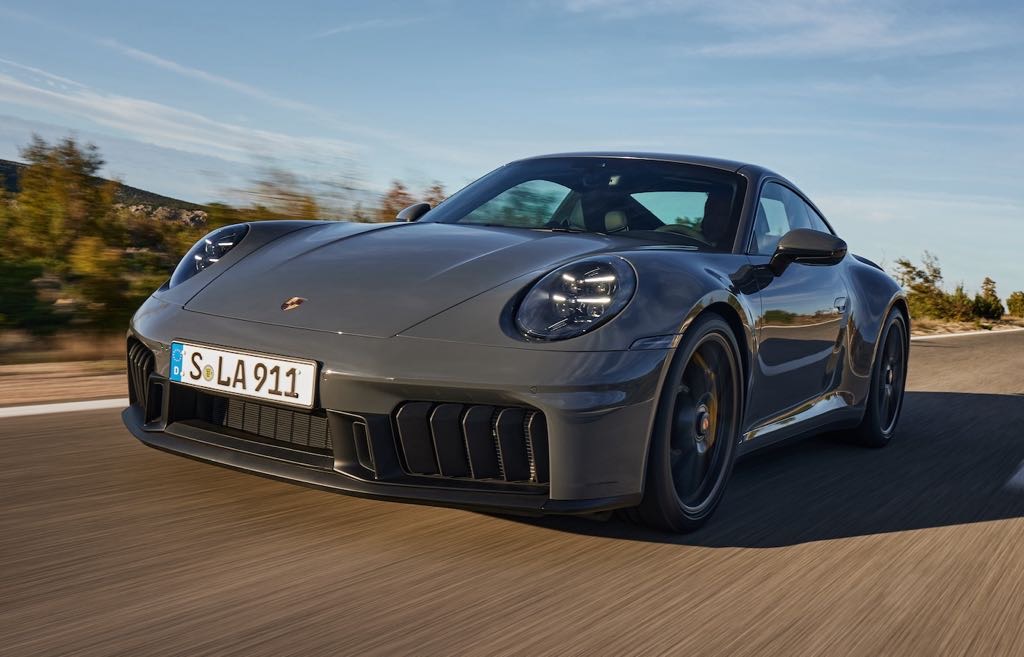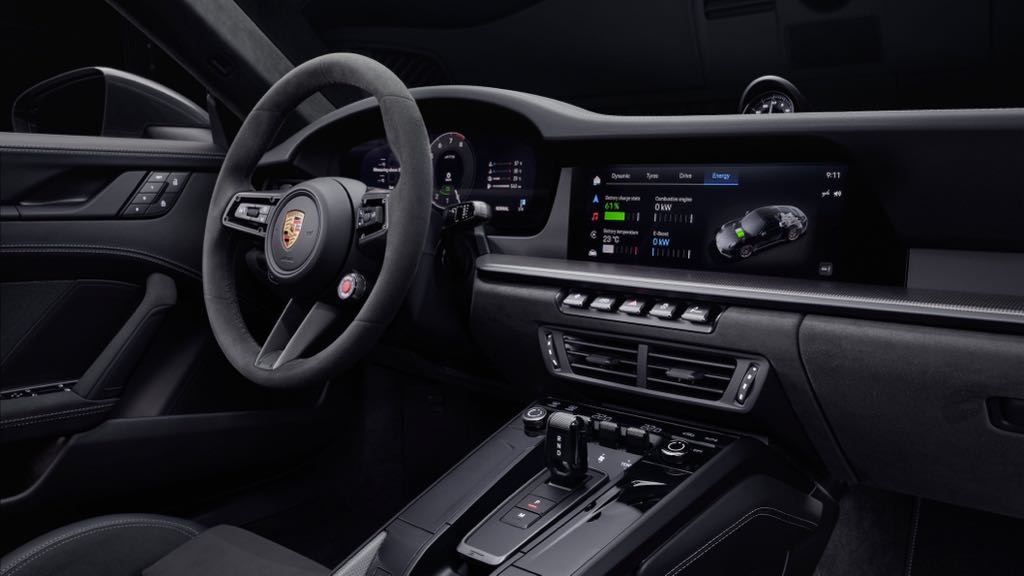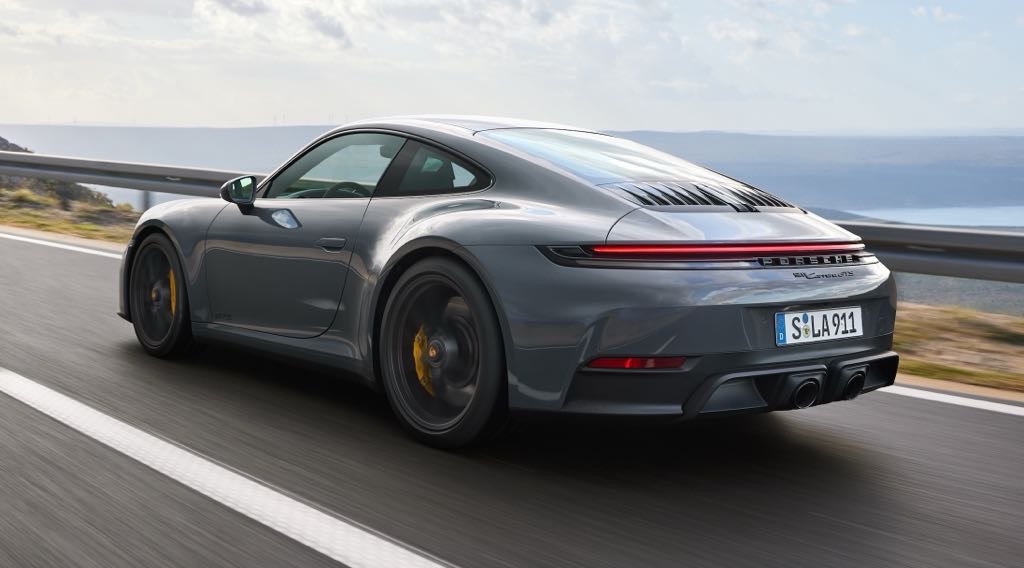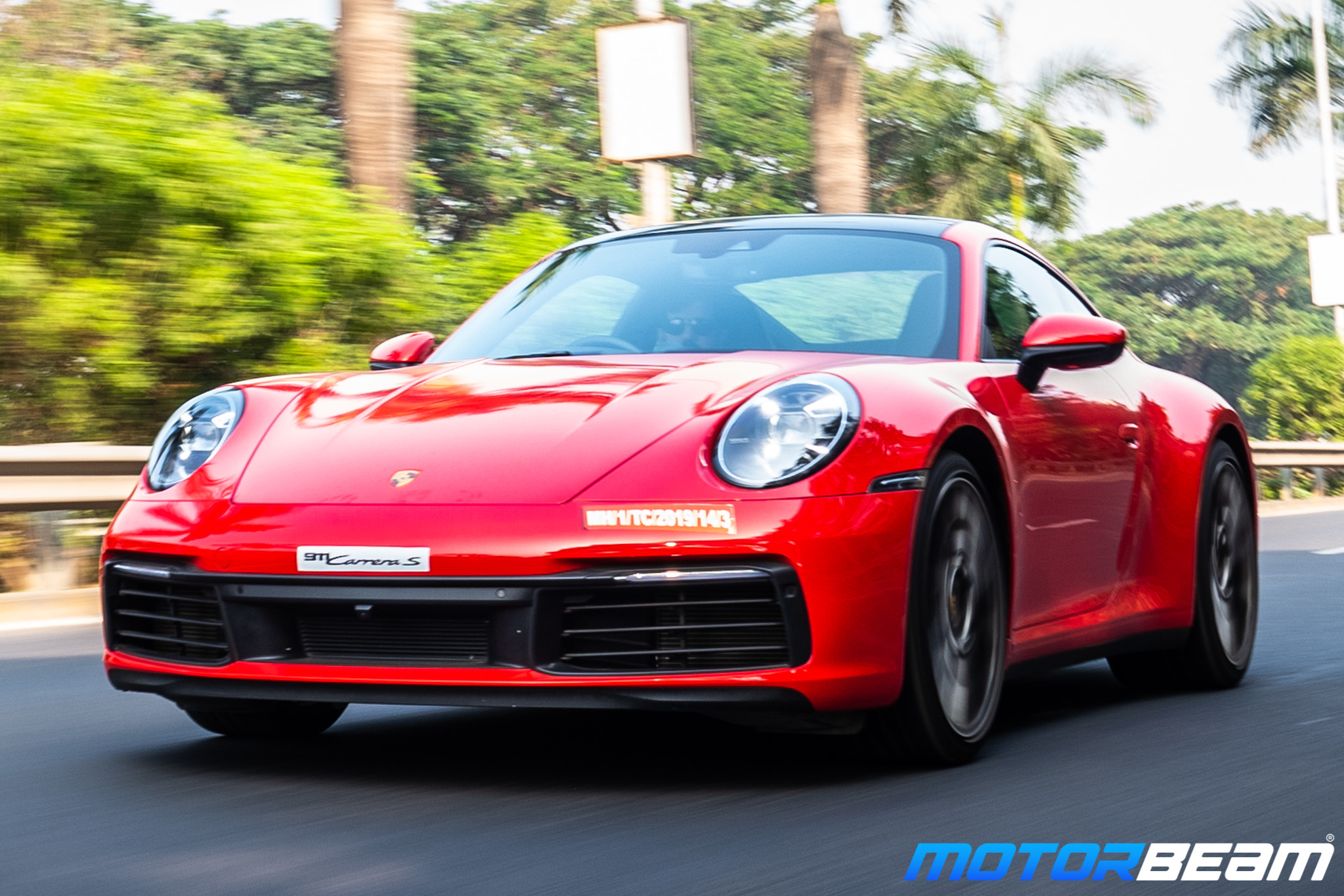
Porsche 911 gets more performance and better efficiency with new hybrid powertrain
Porsche 911 hybrid unveiled, the first electrified version of the sports car, marking a significant technological leap for the 7th generation model. The new 911 GTS gets a freshly developed 3.6-litre flat six engine with an electric motor to deliver 534 BHP.
The hybrid powertrain, dubbed the T-Hybrid, incorporates technology trickled down from Porsche’s Le Mans-winning 919 Hybrid race car. This new system integrates a turbocharged six-cylinder boxer engine, a gearbox-mounted electric motor and a compact liquid-cooled lithium-ion battery. The combined setup enhances the 911 GTS’s output by 60 BHP and 40 Nm of torque compared to its predecessor, which featured a twin-turbo 3.0-litre engine.
Performance improvements are notable. The hybrid GTS accelerates from 0-100 km/hr in just 3.0 seconds, a reduction of 0.4 seconds from the previous model. The top speed has increased slightly to 312 km/hr.
Despite the hybrid system adding 50 kg to the vehicle’s kerb weight, bringing it to 1595 kg, Porsche has optimised weight distribution, resulting in a front-to-rear ratio of approximately 37:63. This along with the performance enhancements, contributes to a Nurburgring lap time that is 8.7 seconds faster than its predecessor, clocking in at 7 minutes and 16.93 seconds. This time is comparable to the 718 Cayman GT4 RS and only slightly slower than the 918 Spyder.
Central to the T-Hybrid’s innovation is a new BorgWarner turbocharger equipped with an energy recuperation system, capturing up to 11kW of kinetic energy from exhaust gases. The system combined with brake regeneration allows the 911 GTS to utilise a 1.9kWh battery without requiring external charging. Porsche 911 project leader Frank Moser highlighted that energy is continuously recuperated during acceleration, braking and coasting, even at the top speed of 312 km/hr.
The new flat six engine alone produces 479 BHP and 571 Nm of torque. The electric motor, integrated into the 8-speed dual-clutch gearbox, adds 54 BHP and 151 Nm of torque. Together, they deliver peak power at 6500 RPM and a flat torque curve between 1950 RPM and 6000 RPM.
The hybrid system’s components, including the 400V lithium-ion battery and a pulse inverter, are packaged at the front of the car, leading to a slight reduction in fuel tank capacity to 84 litres. Additionally, the smaller 12V lithium-ion battery has been moved beneath the rear seat.
The 911 GTS’s aerodynamics have been refined with new active front air ducts, redesigned bumpers housing radar and ultrasonic sensors, OLED tail lights, revised spoiler and a reworked diffuser. An optional aero kit enhances downforce, reducing lift and improving stability at high speeds. Aerodynamically optimised wheels help achieve a lower drag coefficient of 0.27, a new benchmark for the 911.
Inside, the 911 GTS features a digital driver display replacing the traditional analogue tachometer, with hybrid-specific information integrated into the touchscreen interface. Pricing details remain undisclosed, but the hybrid GTS is expected to carry a premium over the previous GTS model.
We can expect Porsche to introduce the new 911 T-Hybrid in India later this year. How do you like this electrified Porsche? Let us know in the comments section below.








